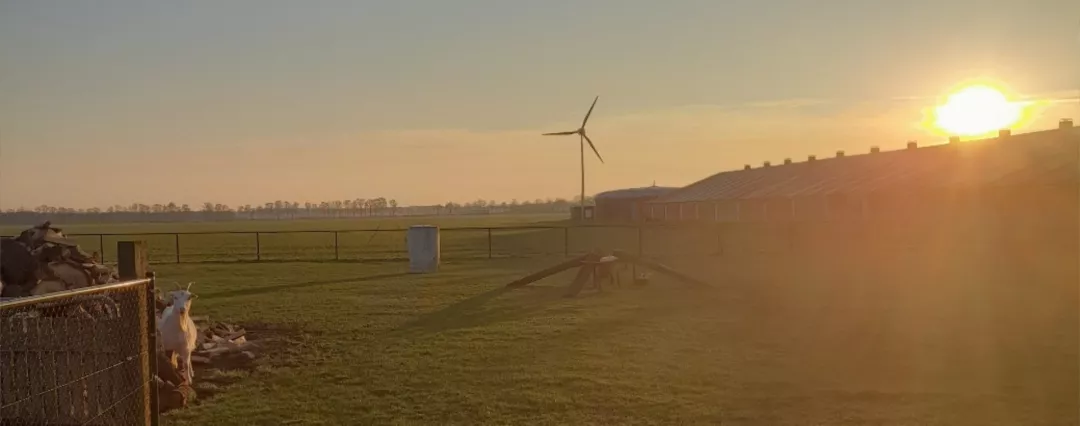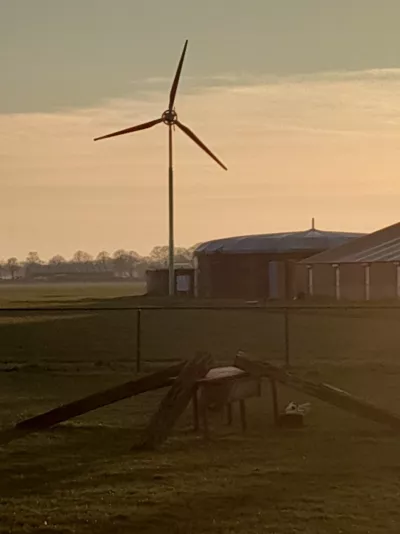General information
RDP Priority
- P2. Competitiveness
RDP Focus Area
- 2A: Farm’s performance, restructuring & modernisation
RDP Measure
- M04: Investments in physical assets
Beneficiary type
- Farmer / land manager
Summary
The project focused on the installation of a small windmill to generate electricity from renewable resources for an average sized farm in Aalden, the Netherlands. The energy from the windmill was used for ventilating a barn for calves. These calves (1 000 animals) were kept for meat production. The small windmill produced a third of the electricity demand of the farm. The young farmer was very positive about his investment and that he received a subsidy for making the family farm more sustainable.
Results
- On average, 23 000 kWh is generated each year. This provided roughly one third of the electricity demand of the farm (75 000 kWh).
- Most of the electricity generated was used on the farm directly with only 1 000 kWh delivered to the energy grid.
Ressources
Documents
Context
Dubbelhuis Kalverhouderij is a family farm in Aalden, the Netherlands, that breeds 1 000 calves for meat production. The farm is just above average in size and is operated by a young farmer and his parents. All year round, ventilation is used to create a good environment for the calves by lowering temperatures and ensuring the supply of fresh air. This demands a lot of electricity.
To reduce energy costs and make the farm more energy efficient, the farmer sought support for investing in a more environmentally friendly source of energy by installing a small windmill and solar panels. Because the farmer had previously been unsuccessful in obtaining funding, he used a consultant to apply for a subsidy towards the investment costs to increase his chances of succeeding in his funding request.
Objectives
The aim of this project was to make the farm energy neutral by investing in a small windmill and solar panels.
Activities
The first activity of the project was to assess the feasibility and location of the new installations. It was decided that the windmill should be located away from the road to reduce a potential negative impact on the area. Regarding the solar panels, issues with the roof and insurance were identified and the decision was made not to pursue this part of the investment (the costs and funds for the solar panels were taken out of the approved award allocation thereafter).
Following the procurement of the windmill, a 15 metre high (axle height) windmill with a capacity to produce up to 29 000 kWh was installed. The investment was expected to last for 20 years.
Main results
- The windmill was installed successfully. On average, 23 000 kWh is generated each year. This provided roughly one third of the electricity demand of the farm (75 000 kWh).
- Most of the electricity generated was used on the farm directly with only 1 000 kWh delivered to the energy grid.
Key lessons
- Because the young farmer was managing the farm jointly with his parents, he was not eligible for the larger subsidy available for young farm owners. In the opinion of the applicant, any future policy should take into account that many young farmers still work with their parents and will take over the family farm in future. This should not prevent them from accessing the more favourable grant conditions which are in place for young farm owners.
If I apply for larger subsidies, I engage a consultant to take away risk and responsibility since I once made a mistake that cost me EUR 5 000 of a subsidy.

